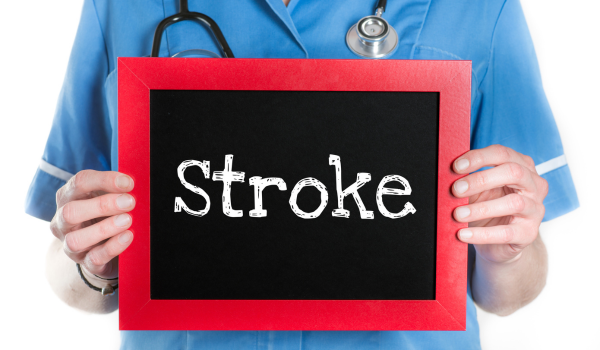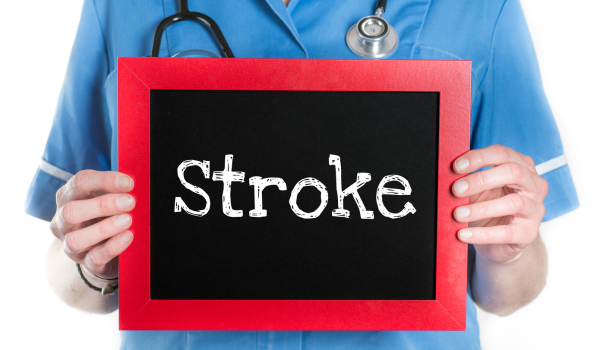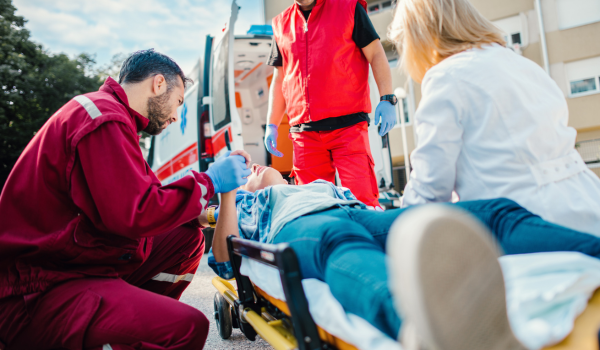.png)
What Is a Stroke?
A stroke occurs when blood flow to a part of the brain is interrupted or reduced, preventing brain tissue from receiving oxygen and nutrients. Within minutes, brain cells begin to die. Depending on the type and severity, a stroke can cause permanent brain damage, disability, or even death.
There are three main types of stroke:
-
Ischemic Stroke
-
Hemorrhagic Stroke
-
Transient Ischemic Attack (TIA)
Each type has unique causes, symptoms, treatments, and risks.
Ischemic Stroke
Ischemic strokes account for approximately 87% of all strokes. They happen when a blood vessel supplying the brain is obstructed, usually by a clot.
Causes
-
Thrombosis: A clot forms in an artery directly leading to the brain, often due to atherosclerosis.
-
Embolism: A clot or debris forms elsewhere in the body (usually the heart) and travels to the brain.
-
Hypoperfusion: Critically low blood flow from shock or cardiac arrest.
Symptoms
-
Sudden numbness or weakness, especially on one side of the body
-
Trouble speaking or understanding
-
Vision disturbances in one or both eyes
-
Loss of balance or coordination
-
Sudden severe headache
Subtypes
-
Thrombotic Stroke: Caused by a clot that forms in a brain artery.
-
Embolic Stroke: Caused by a clot that travels from another part of the body.
Treatment
-
tPA (Tissue Plasminogen Activator): A clot-busting drug, effective within 3–4.5 hours of onset.
-
Mechanical Thrombectomy: Surgical removal of large clots in major brain arteries.
-
Antiplatelets and Anticoagulants: Long-term prevention.
Prompt recognition and intervention are essential to minimize damage.
Hemorrhagic Stroke
Hemorrhagic strokes result from the rupture of a blood vessel in the brain, causing bleeding into or around the brain.
Causes
-
Hypertension (high blood pressure)
-
Aneurysms (weakened artery walls)
-
Arteriovenous malformations (AVMs)
-
Head trauma
-
Blood-thinning medications
Types
-
Intracerebral Hemorrhage: Bleeding directly into the brain tissue.
-
Subarachnoid Hemorrhage: Bleeding into the space between the brain and skull.
Symptoms
-
Sudden, severe headache (often described as “the worst headache ever”)
-
Nausea and vomiting
-
Loss of consciousness
-
Seizures
-
Weakness or numbness
Treatment
-
Blood pressure management
-
Surgery to remove the hematoma
-
Repair of aneurysms or AVMs
-
Medications to counteract blood thinners
Hemorrhagic strokes are less common but more fatal. They require rapid emergency care.
Transient Ischemic Attack (TIA)
Often called a "mini-stroke," a TIA occurs when blood flow to the brain is temporarily blocked but then restored before permanent damage occurs.
Causes
-
Small clots that briefly block blood flow
-
Narrowed blood vessels
-
Embolic fragments from heart or large arteries
Symptoms
TIA symptoms mimic those of a full-blown stroke but resolve within minutes to a few hours:
-
Numbness or weakness
-
Confusion or trouble speaking
-
Dizziness or balance issues
-
Vision changes
Duration
-
Symptoms typically last less than 24 hours
-
Most resolve in under 1 hour
Warning Sign
TIA is a major warning sign of an impending stroke. Up to 1 in 3 people who experience a TIA will have a stroke, often within days or weeks.
Treatment
-
Same as ischemic stroke prevention:
-
Antiplatelet therapy
-
Lifestyle changes
-
Treating underlying conditions (AFib, hypertension, diabetes)
-
Ignoring a TIA can be fatal. Early evaluation and treatment are critical.
Stroke Risk Factors
Several factors increase the risk of stroke, regardless of type:
-
Uncontrolled hypertension
-
Diabetes
-
Atrial fibrillation
-
Smoking
-
High cholesterol
-
Obesity and sedentary lifestyle
-
Heavy alcohol use
-
Family history of stroke
Certain risk factors are modifiable, meaning lifestyle changes can reduce stroke risk.
Stroke in Young Adults
Although stroke is more common in older adults, it can affect people under 50. Common causes in younger individuals include:
-
Drug use
-
Heart defects (e.g., patent foramen ovale)
-
Autoimmune disorders
-
Genetic clotting disorders
-
Birth control pills (especially with smoking)
Early recognition is crucial, even in younger patients.
Recognizing Stroke Quickly
The acronym FAST is a simple tool for spotting stroke symptoms:
-
Face: Is one side drooping?
-
Arms: Can they raise both arms evenly?
-
Speech: Is speech slurred or strange?
-
Time: Call emergency services immediately!
Time lost is brain lost. Immediate response improves outcomes.
Long-Term Effects
Depending on the type and severity, strokes can cause:
-
Partial or full paralysis
-
Difficulty speaking or understanding language
-
Cognitive changes
-
Depression or mood swings
-
Memory problems
-
Loss of independence
Rehabilitation may involve physical, speech, and occupational therapy.
Prevention Tips
Preventive strategies vary slightly by type but often overlap:
-
Control blood pressure and cholesterol
-
Manage diabetes
-
Exercise regularly
-
Eat a heart-healthy diet (low salt, low saturated fat)
-
Avoid smoking and excessive alcohol
-
Monitor heart health (e.g., AFib)
-
Take prescribed medications consistently
Preventing the first stroke—and avoiding recurrence—is possible with commitment.
Stroke Recovery
Recovery depends on stroke severity, patient age, and rehabilitation quality.
-
Ischemic stroke survivors often recover better with early intervention.
-
Hemorrhagic stroke survivors may face longer hospitalizations and recovery.
-
TIA patients can prevent future strokes with prompt lifestyle and medical changes.
Stroke survivors benefit from emotional and social support, as recovery can be mentally exhausting.
Conclusion
Understanding the differences between ischemic stroke, hemorrhagic stroke, and TIA is essential for prevention, recognition, and treatment. All three types carry serious health risks, but each has unique characteristics and management strategies.
Being informed can help you act quickly—and possibly save a life.
.png)
.png)
.png)
.png)
.png)
.png)
.png)
.png)
.png)
.png)
.png)
.png)
.png)
.png)








